75 years since atomic bombs dropped on Hiroshima and Nagasaki in Japan
- Published
- comments
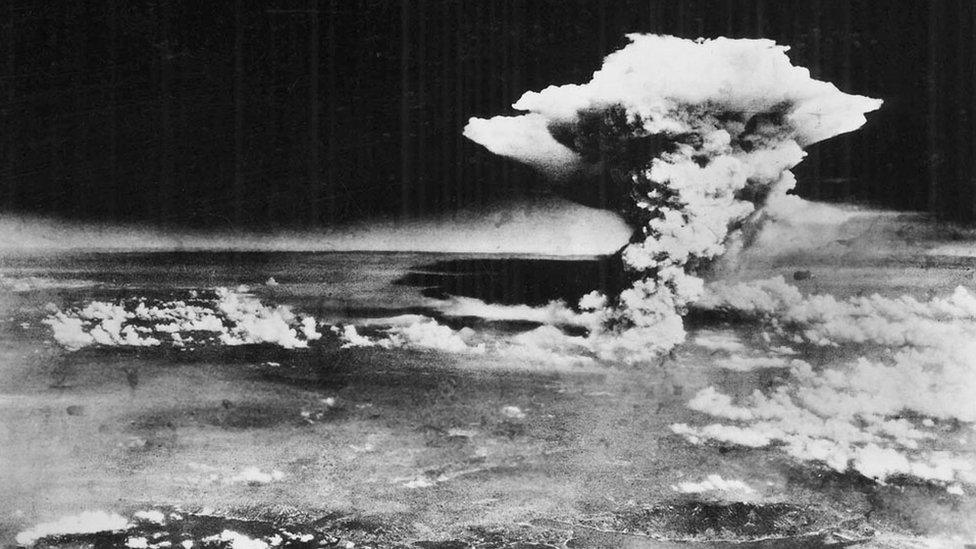
This photo shows the aftermath of a nuclear bomb dropped on Hiroshima in Japan - one of only two times that nuclear weapons have been detonated in war
In 1945 World War Two - the biggest war the world had ever seen - came to an end.
There were celebrations in Europe after Germany surrendered.
But on the other side of the world in the Pacific Ocean, Japan was still fighting against the US, Britain and their allies.
The Americans, however, had a secret plan to end the war for good - by using the most powerful weapon ever created.
August 2020 marks the 75th anniversary of the dropping of atomic bombs on the Japanese cities of Hiroshima and Nagasaki.
What happened in Hiroshima and Nagasaki?
On 6 August 1945 at 8.15am Japanese time, an American B-29 bomber plane called Enola Gay dropped an atomic bomb on the Japanese city of Hiroshima.
The devastation was unlike anything in the history of warfare. The city was immediately flattened.
Around 80,000 people were killed as a direct result of the blast, and another 35,000 were injured.
Even after this devastation, Japan did not surrender.
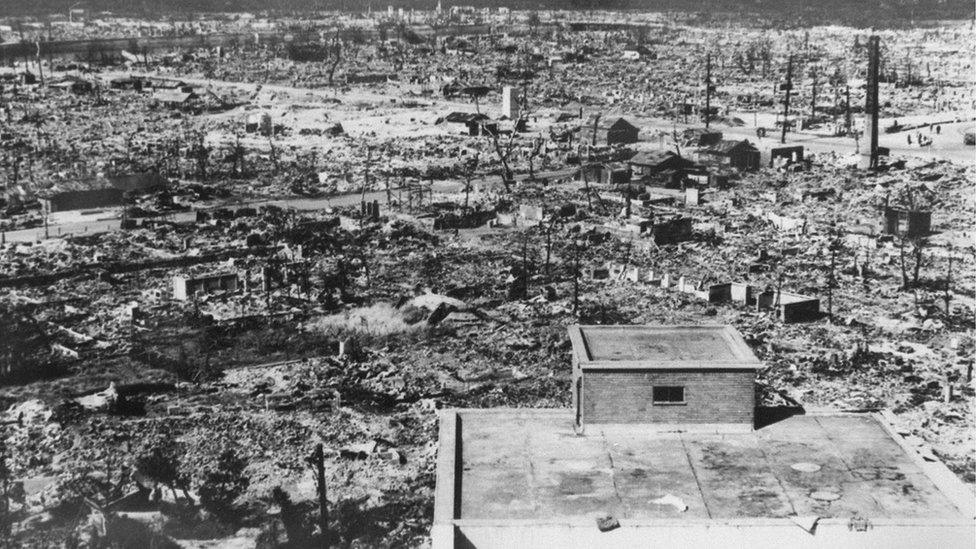
The atomic bomb destroyed thousands of buildings in Hiroshima
Three days later, another nuclear bomb was dropped by the Americans on the Japanese city of Nagasaki.
At least 74,000 people died in the Nagasaki blast or from subsequent injuries.
The attack on Nagasaki destroyed about 30% of the city, flattening almost everything in the industrial district. Those who survived suffered terrible injuries, or radiation sickness.
Shortly afterwards, on 15 August 1945, Japan finally admitted defeat and World War Two was over.
A monument was erected at the park, known as the Peace Statue in 1955. Its right hand pointing to the sky is said to "point to the threat of nuclear weapons", while its left hand extending out symbolises peace, according to Japan's national tourism agency's website.
A memorial ceremony is held in front of it every year.
What damage did the bombs cause?

This building, now called the A Bomb Dome, survived the atomic blast and today it's a memorial in Hiroshima, Japan
When the bomb exploded in Hiroshima, the city was struck by a flash of blinding light, then a giant cloud shaped like a mushroom rose into the sky.
The blast flattened buildings within a 2.5 km radius of the bomb.
There were 90,000 buildings in Hiroshima before the bomb was dropped, but only 28,000 remained after the explosion.
Thousands and thousands of people were killed. Many were badly injured.
Bun was 14-years-old when Hiroshima was bombed. Watch her incredible story of survival
But the suffering didn't end there because it wasn't just a normal bomb.
The nuclear radiation released when it exploded caused people to suffer horrible illnesses.
Thousands more people died from their injuries and radiation sickness in the weeks, months and years that followed.
Why did the US drop nuclear bombs?
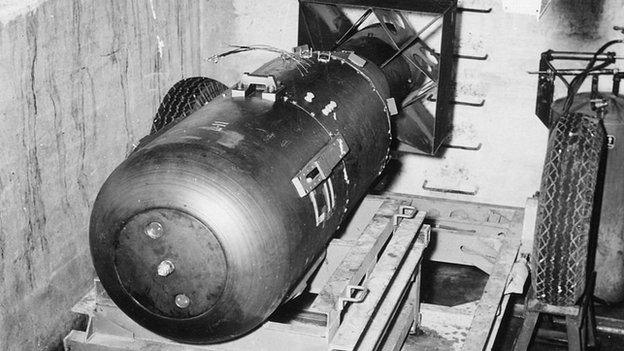
The Hiroshima bomb was nicknamed 'Little Boy' - here it is before being loaded into the Enola Gay's bomb bay
Japan was at war with America and its allies, which included Britain and Soviet Union - a nation made up of modern-day Russia and other countries.
The allies were winning the war and the Japanese forces had been pushed back from many locations.
However, fighting was still very fierce, and soldiers and civilians were dying every day.
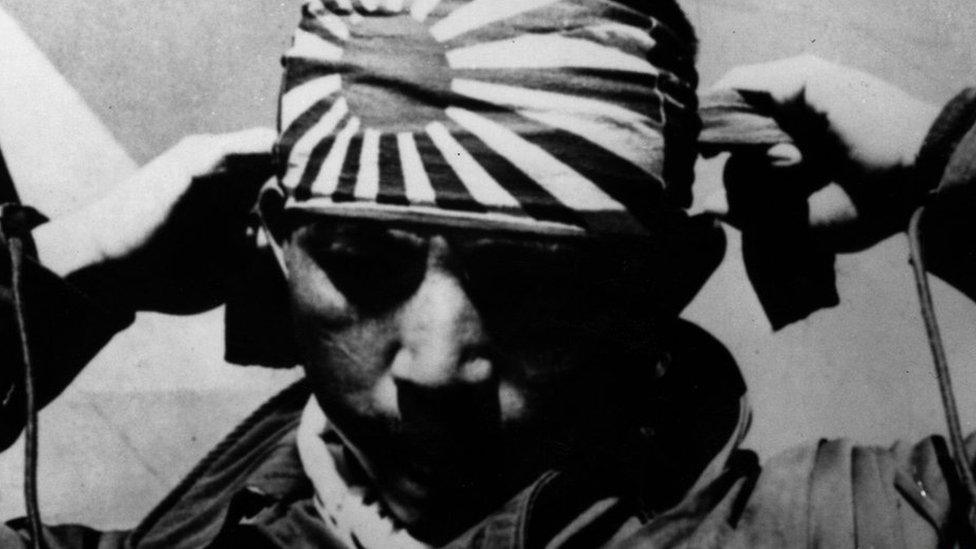
This Japanese Kamikaze pilot is about to set off and deliberately crash his plane full of bombs onto American warships during World War Two - he is tying on honorary ribbons that were always worn when on a suicide mission ('Kamikaze' means 'winds of the gods')
Japan had been at war for many years.
It had invaded the countries near to it such as China, and the Japanese had attacked America.
Everywhere the Japanese soldiers went, they were known for their cruelty.
They treated prisoners of war very badly, including American and British soldiers who had surrendered.
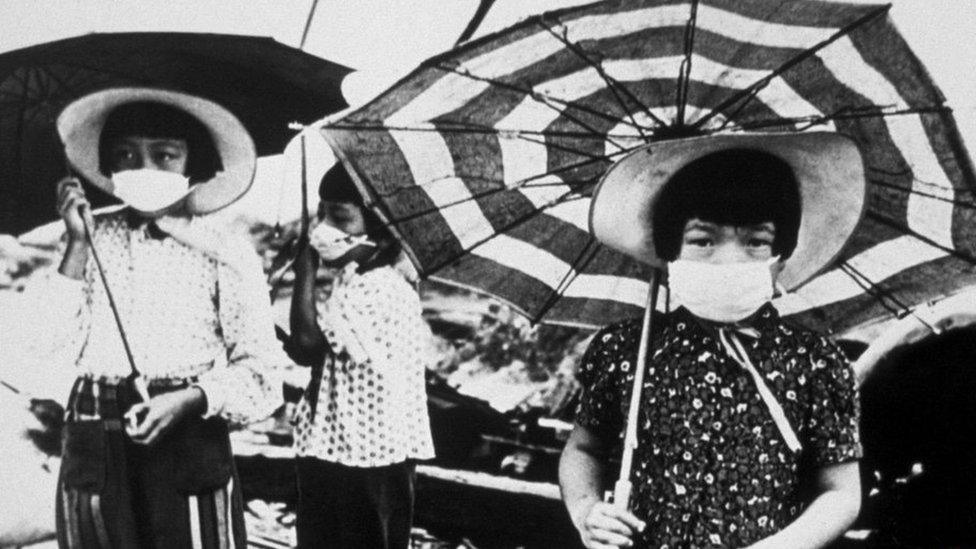
Children in Hiroshima, Japan, wearing masks to protect themselves from the polluted air caused by the bombing
US President Harry S Truman wanted the Japanese to surrender as quickly as possible so he could save lives.
The atomic bomb was a deadly new weapon and President Truman hoped the massive destruction it caused would shock the Japanese into realising they had to surrender.
What did the US hope to avoid?
US President Truman wanted to avoid a land invasion of Japan.

Harry S Truman was the US president during World War Two and it was his decision to drop the nuclear bomb on Hiroshima
There were 2.5 million Japanese troops stationed there and Truman's staff estimated that defeating them would cost the lives of 250,000 US soldiers.
Some historians also say that the US wanted to avoid Japan being occupied by Soviet troops.
America and the Soviet Union were allies but they did not really trust each other.
Why was Hiroshima so important?
Leah looks around Hiroshima's Peace Memorial Park
It was the first and only time that atomic bombs have been used in a war.
Although the scientists who made the bombs were proud of what they'd achieved, it scared them as well.
The way the atomic bomb was built meant it had huge power - enough to destroy whole cities on its own.
Many people now believe that the devastation caused in Hiroshima and in Nagasaki was so awful that the bombs should never be used again.
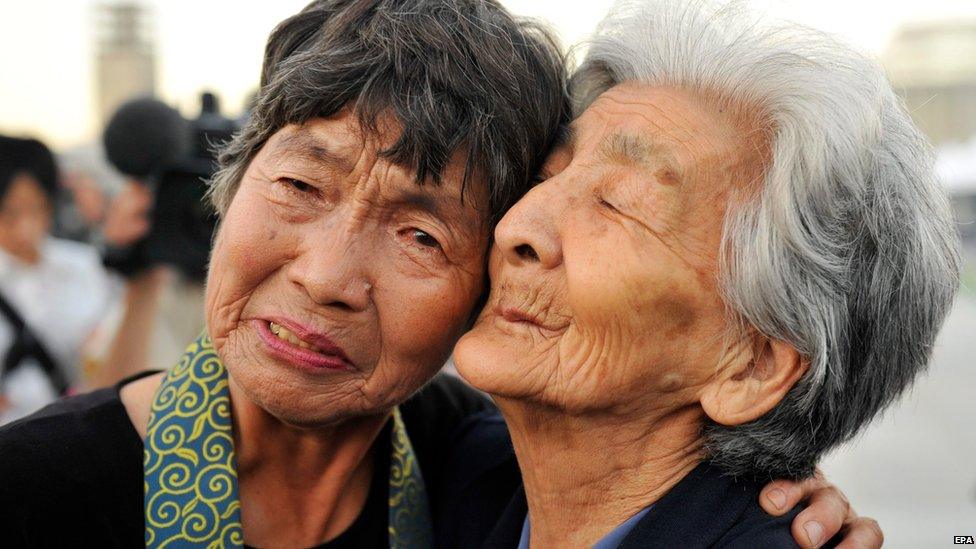
Two survivors of the atomic bombing - Kinuyo Ikegami (left) and Tsuyuko Nakao (right) - hug each other after offering prayers for victims at a ceremony in 2010
Today, a small number of countries around the world, including the US, China and the UK, have nuclear weapons.
Some campaigners argue that there is no place for nuclear weapons and that all countries should get rid of them immediately.
Others say that having such terrible weapons will help to keep a country safe, even if they are never used.
Sadako Sasaki survived Hiroshima, she was aged two when it happened. She became ill a few years later and set herself a task of folding 1,000 origami cranes. Before she died at the age of 12, from leukaemia caused by the nuclear bomb she had folded 644. In 2013 the 'Peace Crane Project' was founded in Sadako's memory and works at promoting world peace.
Attitudes towards atomic bombs have changed a lot since 1945.
Immediately after Hiroshima, lots of Americans who took part in a survey done by Gallup said they agreed with using nuclear weapons.
In 2015 however the same survey showed an all-time low percentage of people supporting the use of nuclear weapons.
- Published27 January 2023
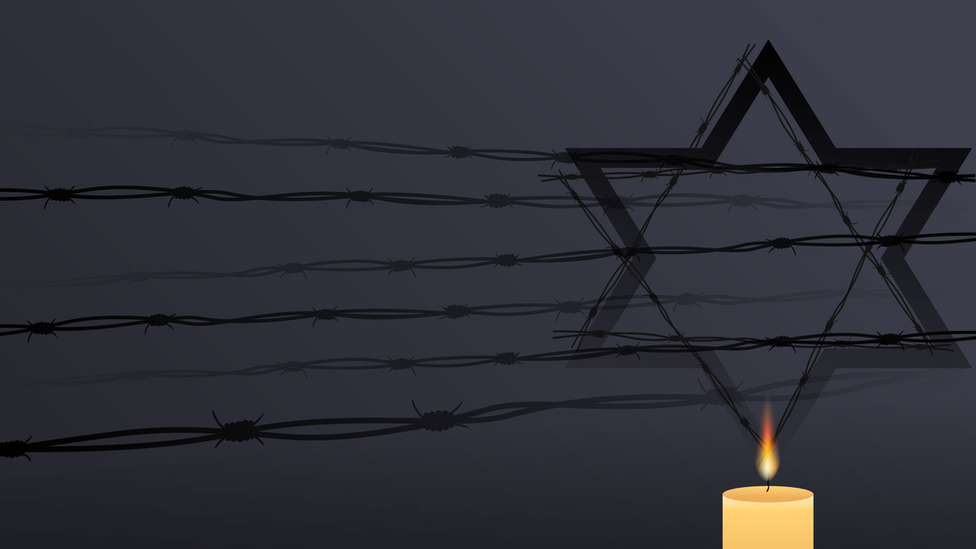
- Published17 July 2024

- Published3 August 2014
